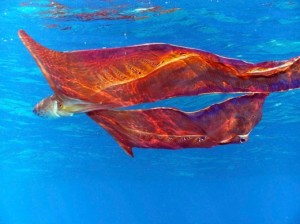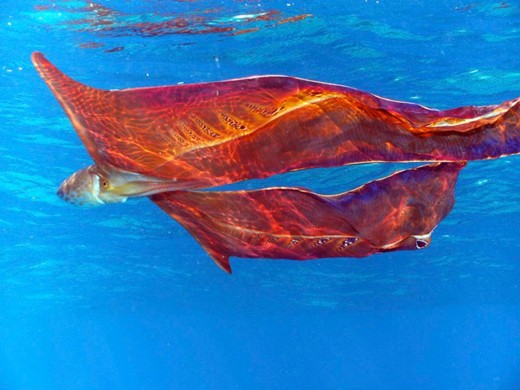There were a few correct answers to this week’s Mystery Creature – but in case any of you are still waiting in anticipation it was the Blanket Octopus (Tremoctopus)

This creature is a real marvel of nature.. here are three reasons why…
1. As the name suggests the blanket octopus has a cape like web that extends down its longest arms. This cape can be spread out behind it as a dramatic deterrent to predators… it makes the animal look a lot bigger and more daunting.
2. That is not to say that the animal is not pretty daunting already. It is lucky in that it is immune to the poisonous sting of the Portuguese Man O’ War. Rather than just counting its blessings and moving on it turns this round to its full advantage and actively removes the stinging tentacles from the creature and carries them around with it, wielding them as weapons when threatened.
3. The female of the species can grow to an impressive two metres in length, but the male… well, he comes in at little more than two centimetres in length making the species one of the most sexually dimorphic in the animal kingdom.
Check back tomorrow for a new Mystery Creature to keep you guessing!


